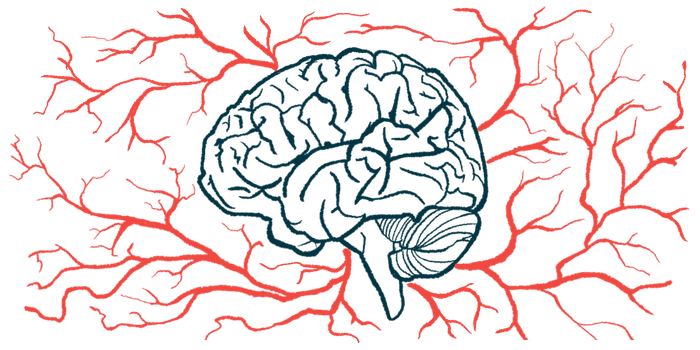Stem Cell Transplant Improves Brain Blood Flow in Children With SCD
Study findings may explain lower risk of stroke after HSCT in sickle cell

Blood flow and oxygen extraction fraction — a measure of how well oxygen is used by tissues — in the brain was improved among children with sickle cell disease (SCD) who underwent a hematopoietic stem cell transplant (HSCT), a small study showed.
According to researchers, these findings may explain why the risk of recurrent strokes or silent cerebral infarctions — also called silent strokes — is reduced in SCD patients who undergo HSCT. A silent cerebral infarction is a stroke that does not cause any overt symptoms; these are common in children with sickle cell anemia.
“Stem cell transplant may restore [brain] oxygen delivery reserve, providing greater stroke protection than chronic transfusion therapy,” which is commonly used as a treatment for sickle cell patients, the team wrote.
The study, “Normalization of cerebral hemodynamics following hematopoietic stem cell transplant in children with sickle cell disease,” was published in the journal Blood.
SCD is a rare blood disorder in which misshapen red blood cells — shaped like a crescent and thus giving the disease its name — block and damage blood vessels, leading to complications like strokes.
Children with SCD are at a higher risk of experiencing strokes and silent cerebral infarctions compared with healthy children. Like a stroke, a silent cerebral infarction may cause cognitive impairments, such as problems in thinking and learning.
Treatments for SCD children
Chronic red blood cell transfusion therapy can reduce first and recurrent strokes. However, up to 20% of children receiving this treatment end up having second strokes, and up to 25% have new or more severe silent cerebral infarctions.
Studies have shown that the risk of recurrent stroke or silent cerebral infarction is reduced in patients who are treated with HSCT compared with those continuing on chronic red blood cell transfusion therapy. HSCT is a treatment that replaces the precursor cells that give rise to red blood cells. To date, it is the only potentially curative therapy available for SCD.
In children with SCD, oxygen extraction fraction, called OEF, is highest in brain regions with lowest brain blood flow. These also are the regions at greatest risk for silent cerebral infarctions.
Researchers also noted that in response to anemia — the lack of red blood cells and also a common symptom of SCD — compensation mechanisms in the brain kick in to increase blood flow and OEF. Additionally, brain blood flow is reportedly higher in adults and children with SCD compared with healthy and anemic controls.
While HSCT has been shown to improve brain blood flow and OEF in a few children and adults with sickle cell disease, whether these patients have levels that reach those observed in healthy controls has not yet been determined.
Now, a team of researchers in the U.S. sought to examine the effects of HSCT in the brains of children with sickle cell disease after receiving a transplant. The researchers also investigated whether HSCT could be more effective at lowering brain blood flow and OEF than chronic red blood cell transfusion therapy.
Their study, conducted from 2015 through 2019, enrolled 10 children with SCD who would be undergoing a planned HSCT. The participants ranged in age from 9.5 to 16.7 years, and four were female. The team also enrolled 20 siblings of the SCD patients and 20 children with SCD who were treated with chronic red blood cell transfusion therapy.
Brain blood flow and OEF were measured using MRI scans one and three months before, and one to two years after HSCT.
Seven of the patients in the HSCT group had sickle cell anemia — the most common form of SCD. Three had sickle cell beta thalassemia, another form of SCD, and symptoms of severe disease. In seven patients, blood cell precursors were obtained from a matched sibling donor, while in three cases they were obtained from a matched unrelated donor.
Before HSCT, three of the 10 children had experienced strokes and five had silent cerebral infarctions. One had unusual transcranial Doppler ultrasound velocities. All were at a high risk of having a premature stroke.
Before treatment, the HSCT group had higher brain blood flow levels than controls (93.5 vs. 69.8 milliliters per 100 grams, per minute, mL/100g/min). After HSCT, these levels dropped to 72.7 ml/100g/min.
OEF also was higher before HSCT compared with controls (36.8% vs. 30.9%), but following HSCT it was found to be lower (27.0%).
Additionally, patients who underwent HSCT had a larger decline in brain blood flow and OEF after HSCT relative to children who were treated with chronic red blood cell transfusion therapy after a scheduled transfusion.
“Children with SCD had normalization of cerebral hemodynamics after stem cell transplant, becoming similar to control children.,” the team wrote.
“Future work should focus on the impacts of stem cell source, preparative regimen, and recipient age on [factors that affect brain blood flow], so that more children with SCD can receive curative therapy in a way that maximizes neuroprotection,” the researchers concluded.







